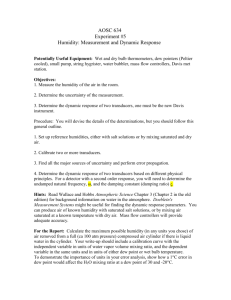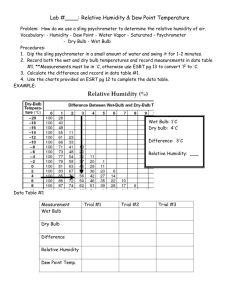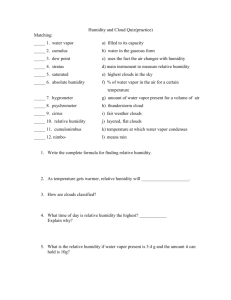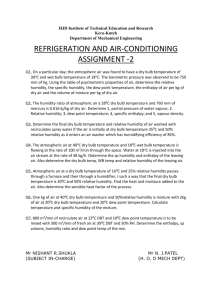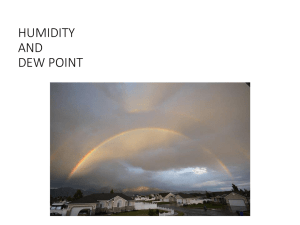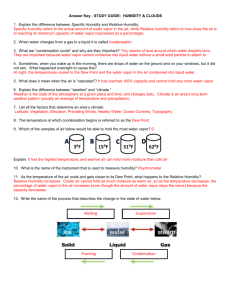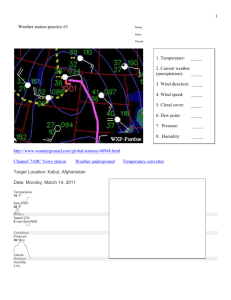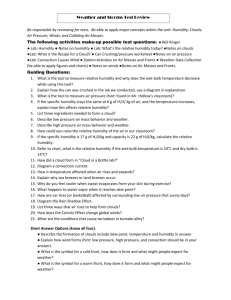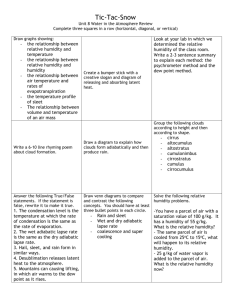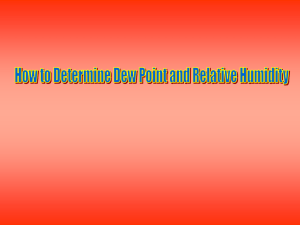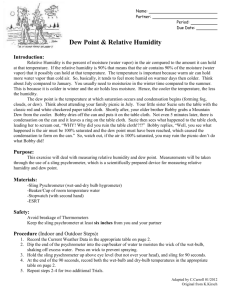Study Guide For Meteorology Test – This guide in no way represents
advertisement
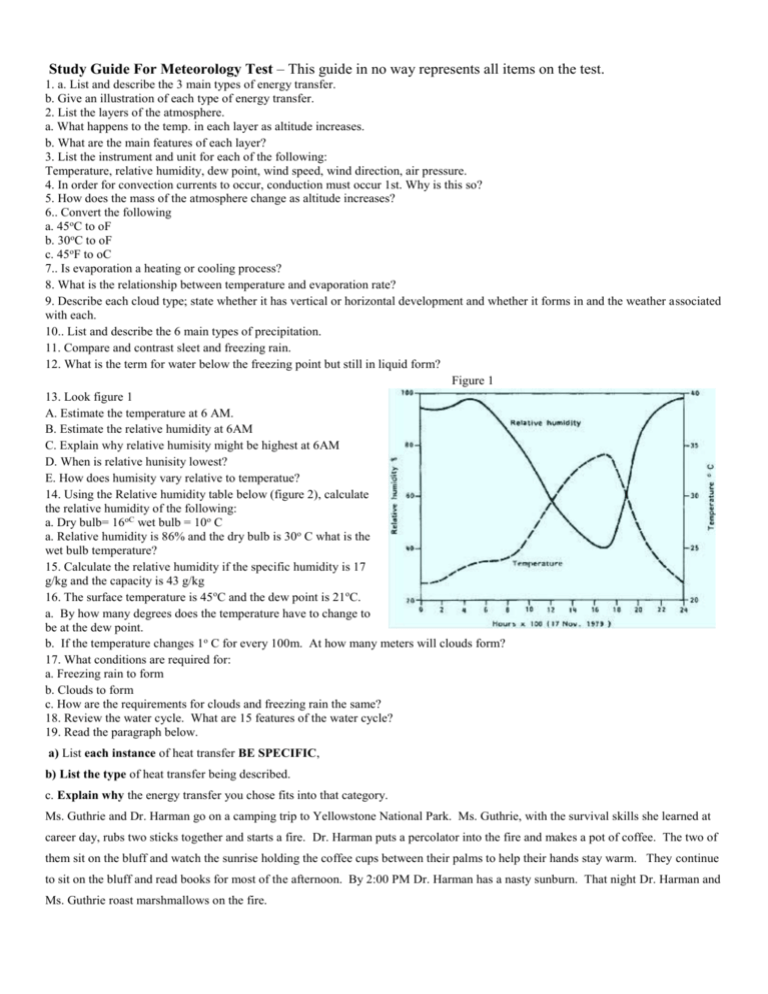
Study Guide For Meteorology Test – This guide in no way represents all items on the test. 1. a. List and describe the 3 main types of energy transfer. b. Give an illustration of each type of energy transfer. 2. List the layers of the atmosphere. a. What happens to the temp. in each layer as altitude increases. b. What are the main features of each layer? 3. List the instrument and unit for each of the following: Temperature, relative humidity, dew point, wind speed, wind direction, air pressure. 4. In order for convection currents to occur, conduction must occur 1st. Why is this so? 5. How does the mass of the atmosphere change as altitude increases? 6.. Convert the following a. 45oC to oF b. 30oC to oF c. 45oF to oC 7.. Is evaporation a heating or cooling process? 8. What is the relationship between temperature and evaporation rate? 9. Describe each cloud type; state whether it has vertical or horizontal development and whether it forms in and the weather associated with each. 10.. List and describe the 6 main types of precipitation. 11. Compare and contrast sleet and freezing rain. 12. What is the term for water below the freezing point but still in liquid form? Figure 1 13. Look figure 1 A. Estimate the temperature at 6 AM. B. Estimate the relative humidity at 6AM C. Explain why relative humisity might be highest at 6AM D. When is relative hunisity lowest? E. How does humisity vary relative to temperatue? 14. Using the Relative humidity table below (figure 2), calculate the relative humidity of the following: a. Dry bulb= 16oC wet bulb = 10o C a. Relative humidity is 86% and the dry bulb is 30o C what is the wet bulb temperature? 15. Calculate the relative humidity if the specific humidity is 17 g/kg and the capacity is 43 g/kg 16. The surface temperature is 45oC and the dew point is 21oC. a. By how many degrees does the temperature have to change to be at the dew point. b. If the temperature changes 1o C for every 100m. At how many meters will clouds form? 17. What conditions are required for: a. Freezing rain to form b. Clouds to form c. How are the requirements for clouds and freezing rain the same? 18. Review the water cycle. What are 15 features of the water cycle? 19. Read the paragraph below. a) List each instance of heat transfer BE SPECIFIC, b) List the type of heat transfer being described. c. Explain why the energy transfer you chose fits into that category. Ms. Guthrie and Dr. Harman go on a camping trip to Yellowstone National Park. Ms. Guthrie, with the survival skills she learned at career day, rubs two sticks together and starts a fire. Dr. Harman puts a percolator into the fire and makes a pot of coffee. The two of them sit on the bluff and watch the sunrise holding the coffee cups between their palms to help their hands stay warm. They continue to sit on the bluff and read books for most of the afternoon. By 2:00 PM Dr. Harman has a nasty sunburn. That night Dr. Harman and Ms. Guthrie roast marshmallows on the fire. Figure 2 20. Look at figure 3. What is the wind chill when the temperature is -20oF and the wind speed is 30 mph? Figure 3
